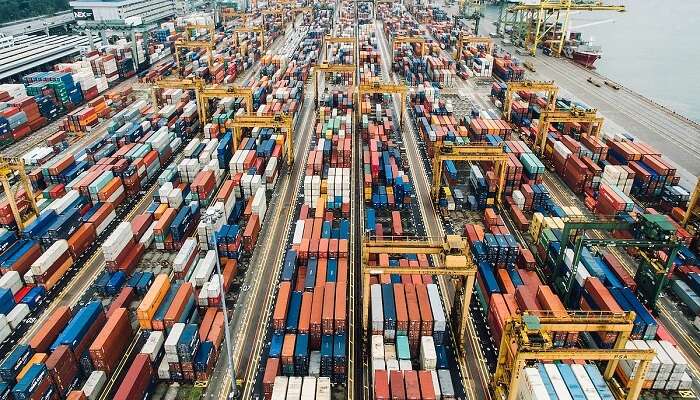Over the past five decades, the use of container boxes for cargo transportation has seen exponential growth, becoming a critical part of global trade in high-value goods. Presently, the global container fleet exceeds 50 million twenty-foot equivalents (TEUs), a significant milestone. However, keeping track of such a vast number of containers worldwide, i.e., ensuring visibility, poses a major challenge for supply chains today. The recent pandemic highlighted this challenge as shippers and carriers struggled with the chaos it brought.
To address these issues, connected containers, known as smart containers, offer a solution by providing greater visibility, reliability, and resilience to supply chains. Smart containers are regular containers equipped with geospatial tracking devices and various sensors connected to the internet through IoT technology, enabling real-time transmission of crucial data to shippers and carriers.
These containers provide essential real-time information such as current location (including geo-fenced areas), temperature variations, physical damage, estimated time of arrival, and door status. This data is invaluable for cargo owners and carriers, and more advanced sensors can offer even more insights into specialized container cargo.
Moreover, the technology behind smart containers has matured enough to be commercially viable, prompting many shipping lines and freight forwarders to rapidly implement digital connectivity systems for their containers. Smart containers have several advantages over traditional containers. They automate data capture during transit, eliminating the scope for human error, and providing stakeholders with accurate real-time data from remote locations worldwide. This real-time data allows for swift identification, location tracking, and monitoring of the container and cargo quality.
The development of smart containers is a result of advancements in various digital and satellite technologies. IoT enables communication between connected devices, allowing data from container sensors to be transmitted to relevant parties for analysis and action. Big Data analysis algorithms can process the vast amounts of data generated by IoT devices, providing immediate solutions or valuable suggestions for supply chain planning. Blockchain technology ensures the secure transmission of validated data across networks, enabling efficient change in container stewardship or ownership at ports and borders. Standardization of digital formats and messaging is crucial for seamless data sharing and analysis, just as the standardization of physical shipping containers revolutionized the industry in the past.
Innovations in smart containers also include collapsible designs, such as those offered by GenFlat. These containers save space at ports, optimize operations, and provide instant access to information on empty containers for reallocation purposes. Major shipping lines like MSC, CMA CGM, and Maersk have invested in smart container technologies, enhancing cargo security and transparency. Hapag-Lloyd has undertaken a significant project to equip its entire dry container fleet with real-time tracking devices. Partnerships between shipping companies and technology providers, like the one between ONE and Sony, are also driving digitization efforts.
Smart containers go beyond achieving a paperless system in container shipping. Through IoT and accurate data-driven decision-making, they unlock a new realm of digital possibilities for the industry. The end-to-end visibility provided by smart containers enables stakeholders to react effectively to current circumstances and leverage insights from big data analysis for better future planning. The sharing of information builds resilience, reliability, and trust throughout the supply chain, leading to enhanced efficiency, safety, cost reduction, and customer satisfaction.


































